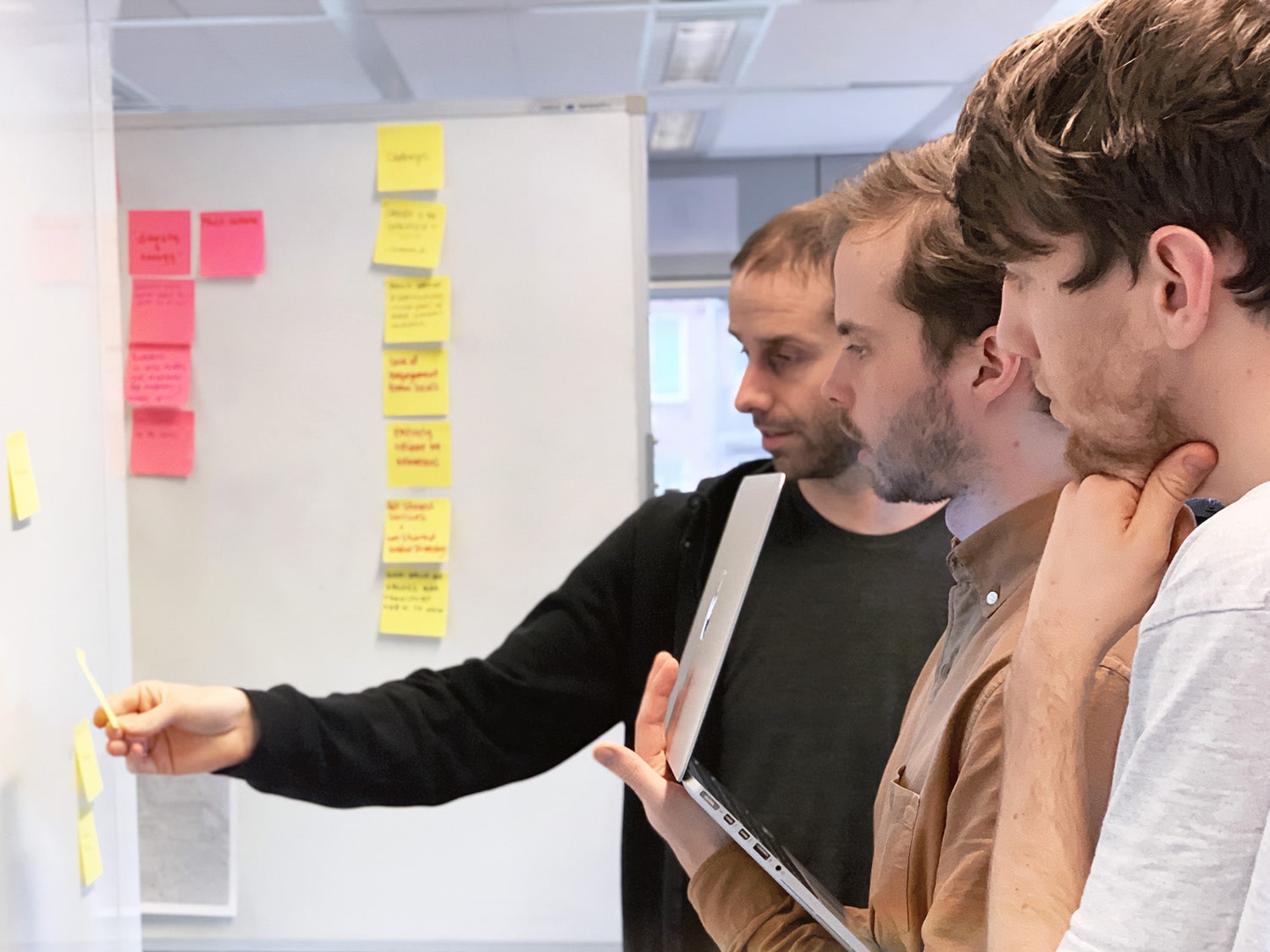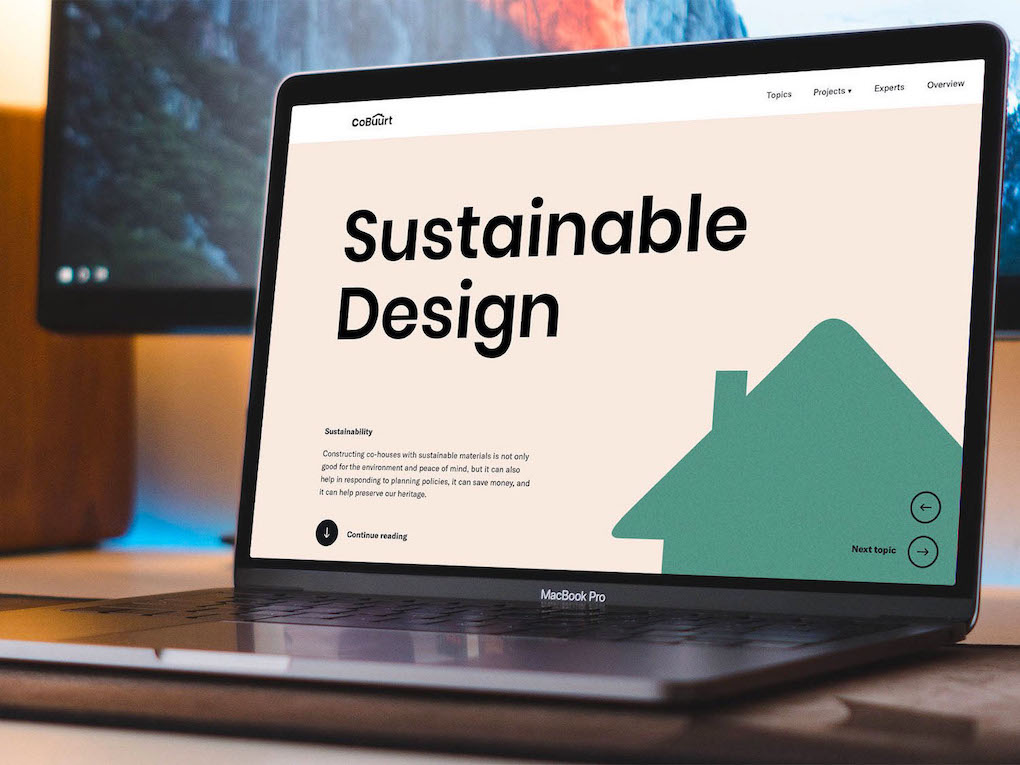Co-housing are intentional communities made up of private homes with some shared living quarters. Co-housing presents an interesting solution for combatting both the housing crisis and climate change.
We helped our clients from STEC Research Group and ONE Architecture conceive a new web platform which connects residents, expert co-housing stakeholders and local government organizations. On the website, commercial stakeholders find project leads, residents seek planning consultation and local government organizations promote sustainable development.
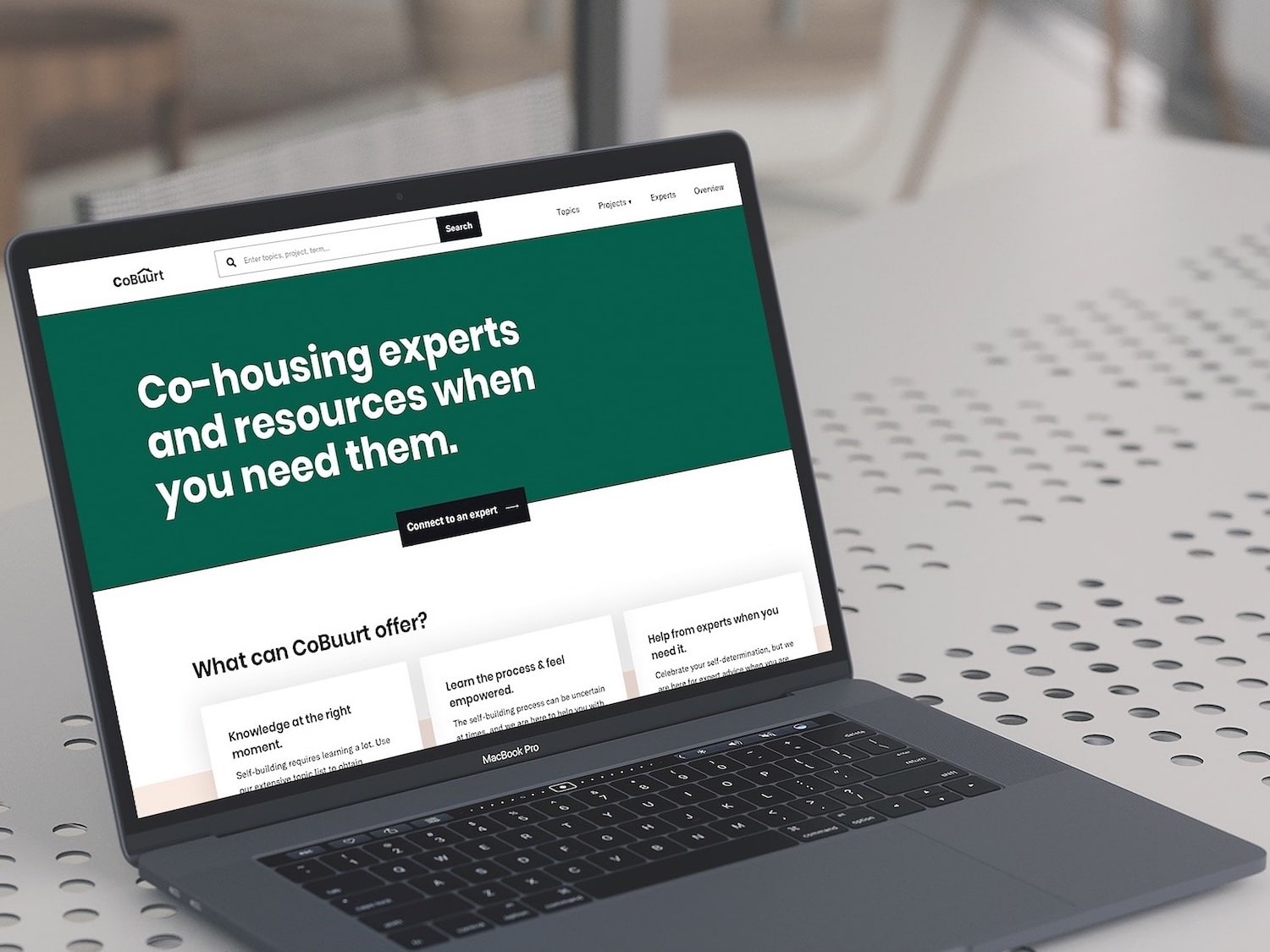
The co-housing development process is expensive, labour/time intensive and can take many years to complete. The process requires expert knowledge at the right moments for projects to succeed. Some other barriers to success which self-builders typically face are navigating municipal zoning restrictions and carrying financial risk over the long planning and development process.
- How might we offer help during the self-building process to reduce planning costs and time taken?
- How might we achieve more overall interest in self-building co-housing communities?
- How might we connect those in need of expert knowledge with the right individuals?
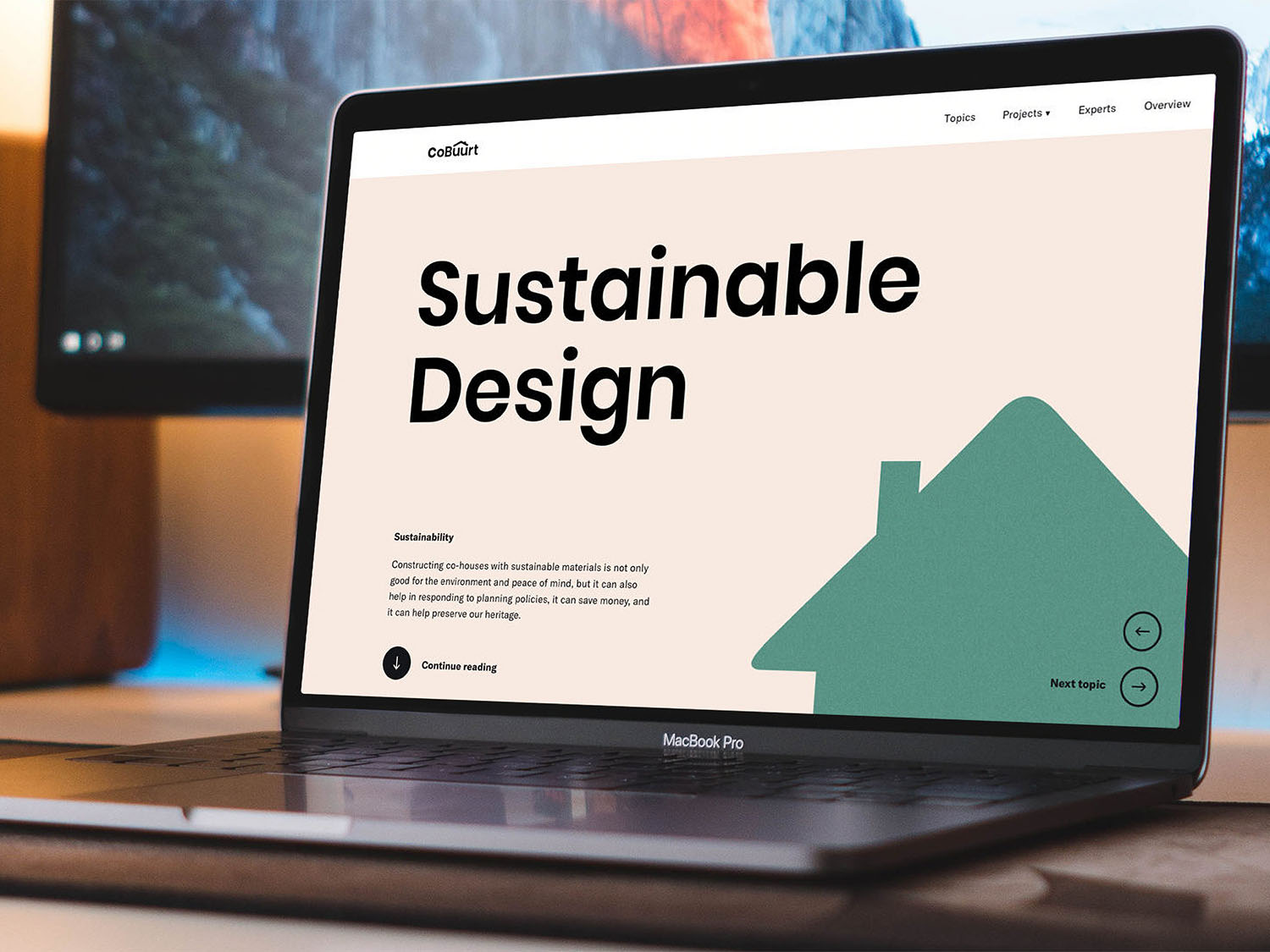
To better understand the design problem space, my team and I began researching and recruiting persons from local co-housing communities within the Netherlands. We conducted user interviews with co-housing members from the following communities: Groene Mient, De Warren, Ons Groene Huis, Iewan and Pension Almonde.
Below are some of the main insights we gathered:
- Most groups were lacking knowledge in certain areas and seek housing experts when necessary
- Some self-building groups have experts already within their group which reduces planning costs
- All groups are motivated to build and live sustainably
- A major benefit of co-housing is living more socially
- Most initiatives start with a small group of close friends
Important interview findings were summarized by creating an empathy map for each interviewee. We then combined common user motivations, frustrations, needs and goals to form a single user persona.
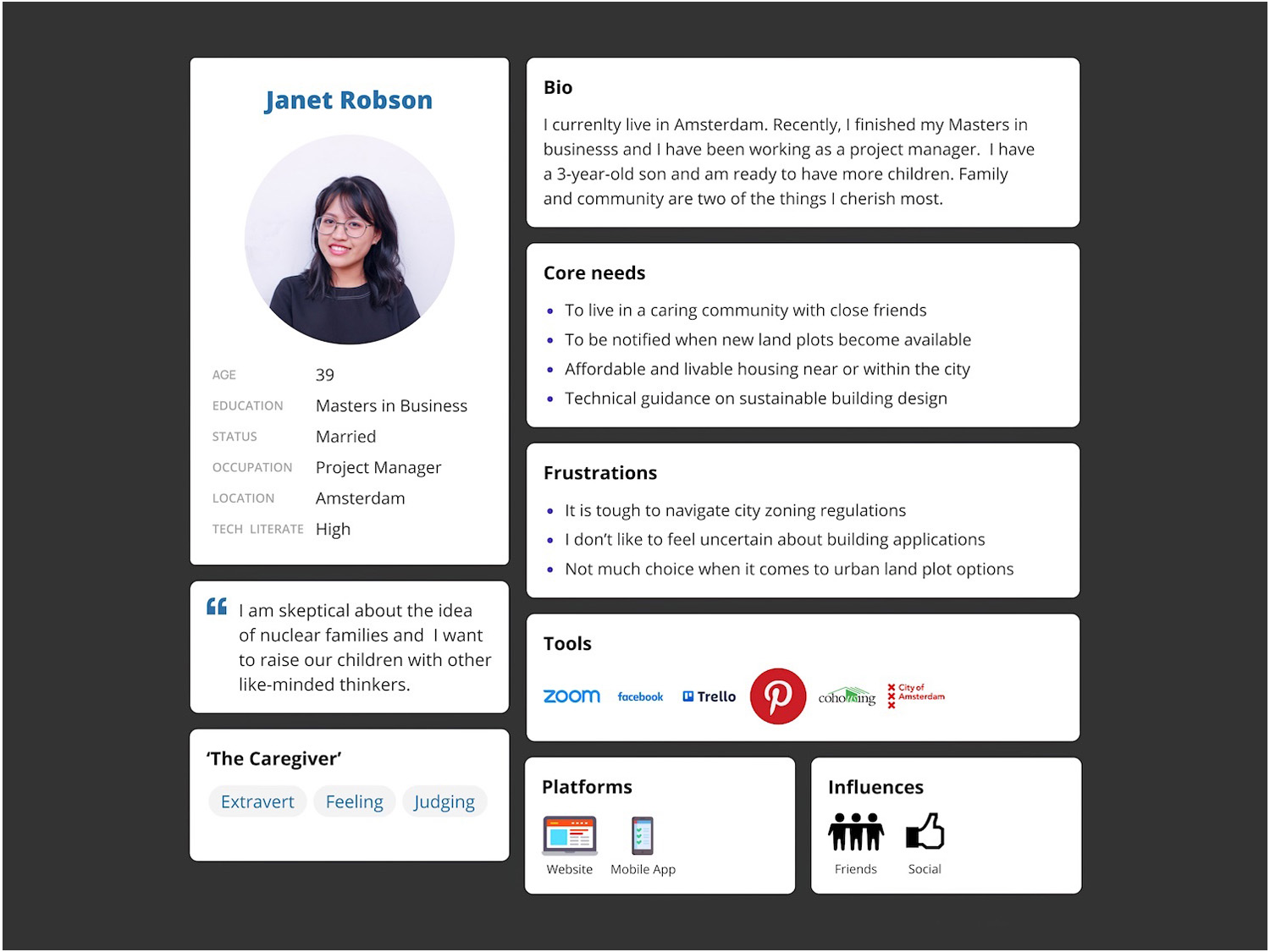
We used a user journey map to illustrate the actions taken by our mock user when planning and building their co-housing community. We revised this map together with our client at ONE Architecture to help better understand process details and to discuss specific opportunities or moments where we might improve a user's self-building process.
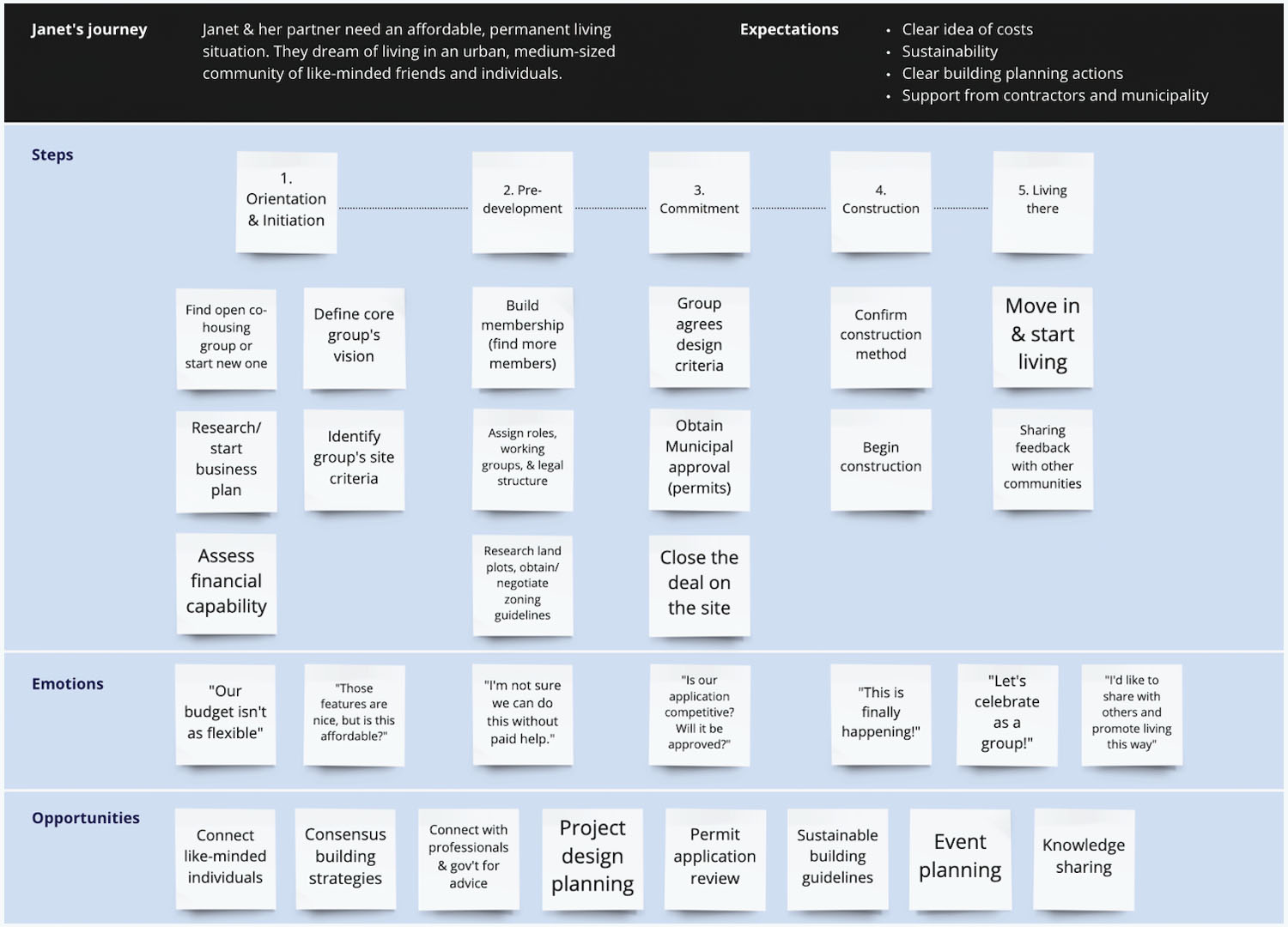
Based on our earlier research discoveries, my team and I were eager to begin to ideate solutions. We began by coming up with a long list of ideas using the 'crazy eights' design sprint method. Ideas generated from this exercise ranged from board games to online roommate finders. We used dot voting to select our top three favourites and proceeded to make wireframes of these:
- A social network where communities seeking new members can advertise vacant units and prospective residents can meet like-minded individuals.
- A project management tool for keeping track of upcoming events and your own progress in relation to the co-housing project.
- A knowledge cafe platform where experienced co-housing residents and other professional stakeholders can coach those who are new to the process.
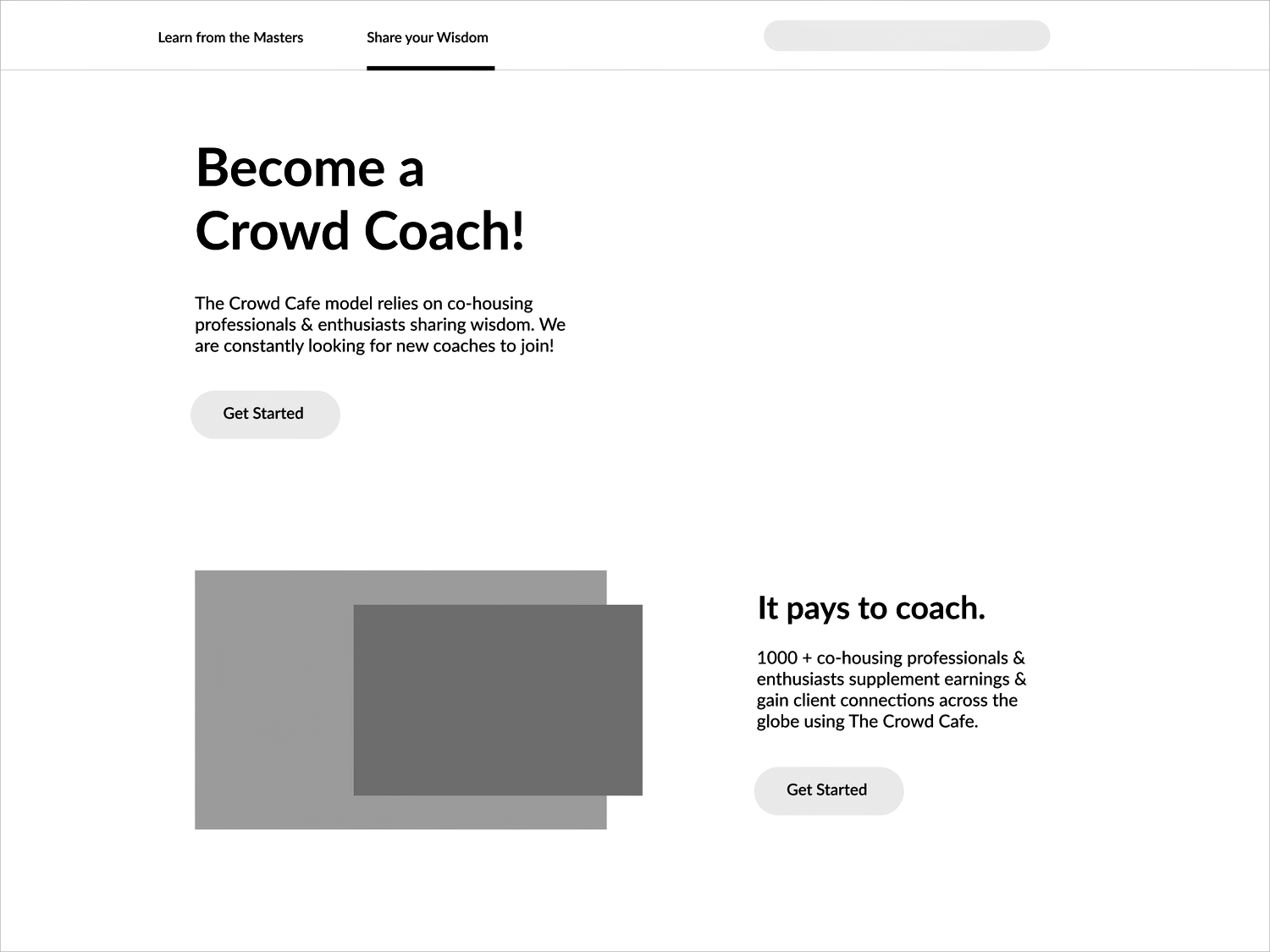
To help decide which of our concepts would be desired the most we created a feature ranking survey. Survey participants were given a fictional budget to spend freely on a list of features that were derived from our earlier ideation sessions:
- Vote online for/against proposals for my co-housing project.
- View pricing and energy details for co-housing project proposals.
- State what I am willing to share and see what others are willing to share in return.
- Collaboratively assign tasks to members of the community to divide responsibilities.
- Connect and learn from co-housing professionals and communities.
- Be offered suggested co-housing groups and individuals with similar interests/values.
- View/navigate a timeline of past and future tasks, milestones and events related to my project.
We used SurveyMonkey to send this survey to members of the co-housing groups that we had been in touch with and to our clients at STEC and ONE Architecture.
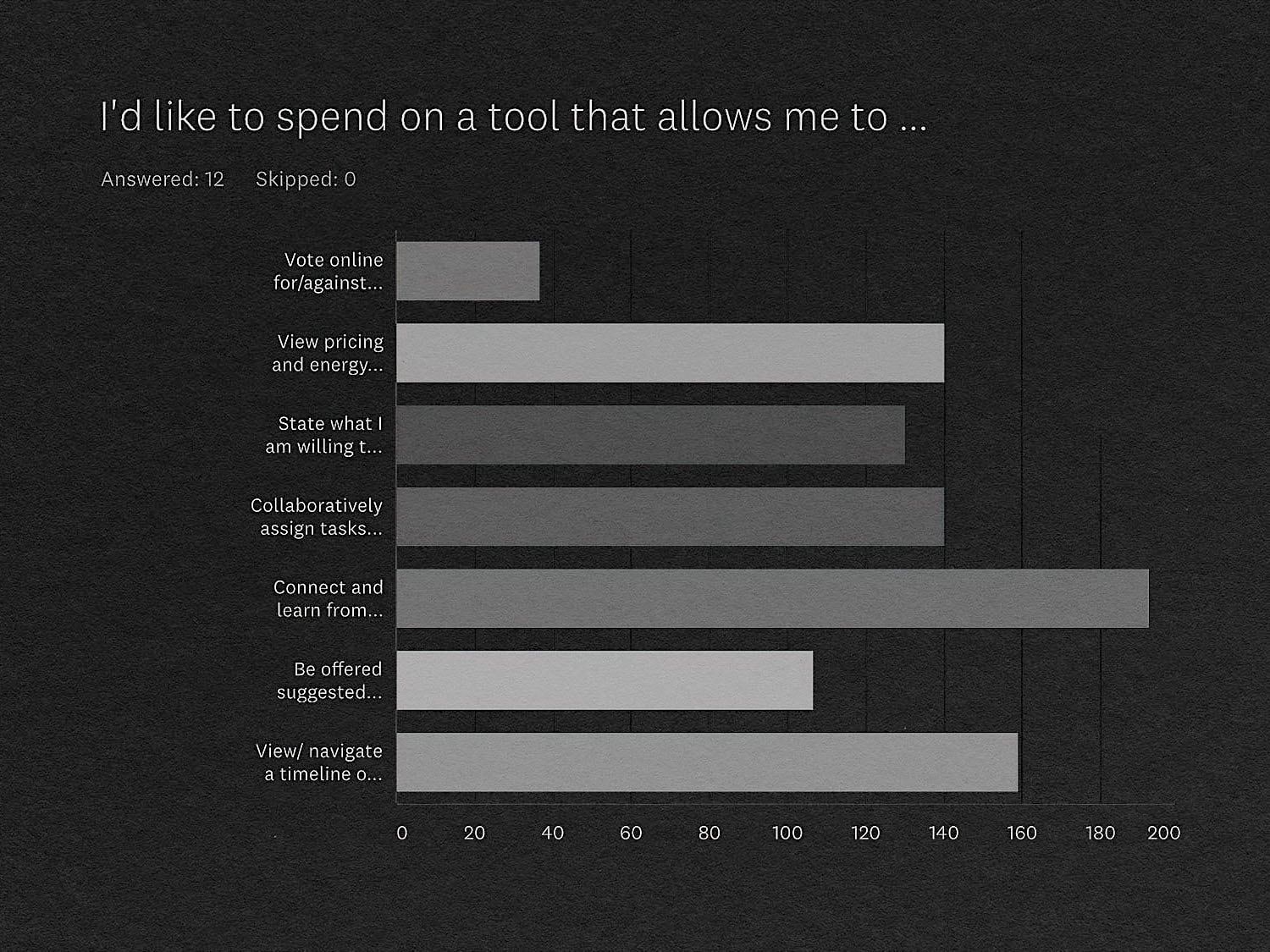
The survey results showed a preference for the 'learning from co-housing experts' feature. We held our own team vote based on a list of pros and cons before proceeding with this concept.
While presenting this idea to our clients, we used a value proposition canvas to outline self-builder goals, desires and pain points as well as how our platform planned to address some of these.
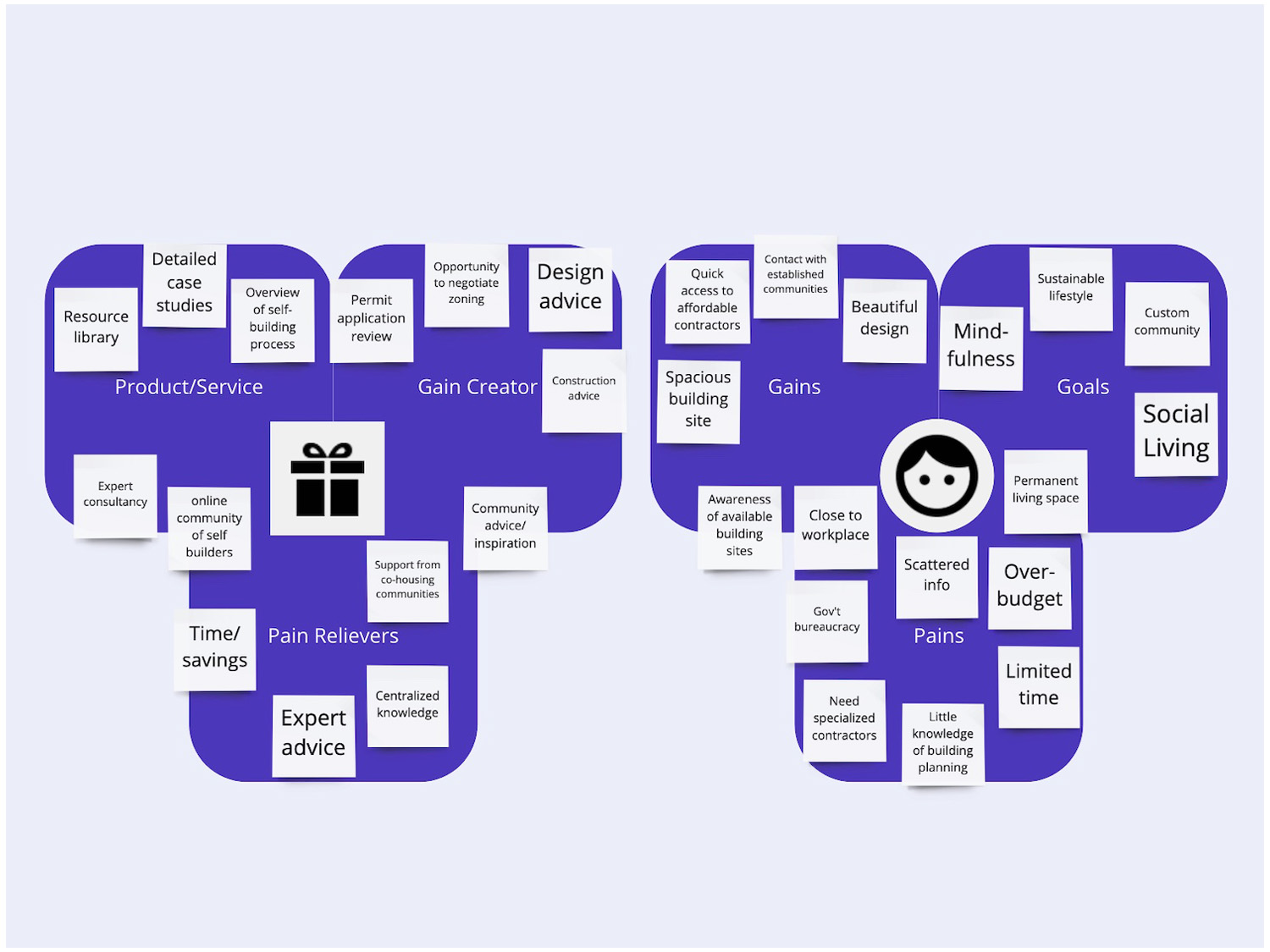
We then created a simple ecosystem map which helped to illustrate the touch points and value exchanges between our platform’s owners, moderators and site users. We discussed our concept’s weaknesses with our clients and began to identify potential solutions.
Our final proposed service solution was to have a website moderator (our client at One Architecture), professional contractors, representatives from co-housing communities and local government organizations to join the platform as sponsors. Our client and their affiliate contractors would generate leads with the help of established communities. Local government organizations could better promote sustainable and affordable co-housing developments with help from the private sector.
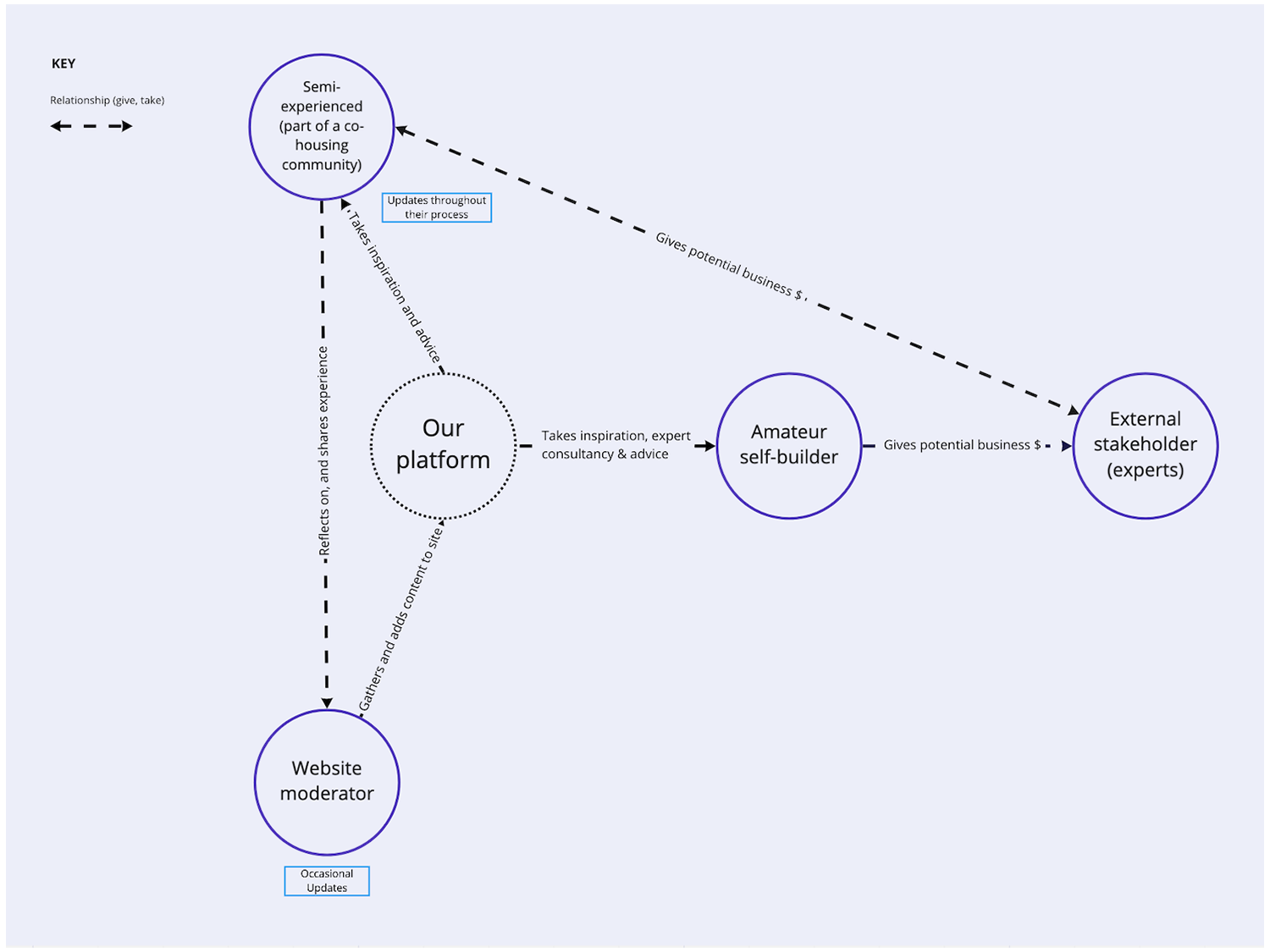
Next, we arranged two video call think aloud-sessions where we asked participants to click their way through our wireframe prototype while describing their experience. Some insights we gained from these user walkthroughs included the need for a clearer website value proposition and transparent site ownership.
We used the tool Optimal Workshop to run first-click tests with users. We examined heat maps which showed where users first clicked on a page to help decide whether our expert call-to-action was appropriately placed. We used Optimal Sort, an online card sorting tool, to have users organize site content under the predefined labels we provided. We later on used these labels and groupings for our topics and resources page.
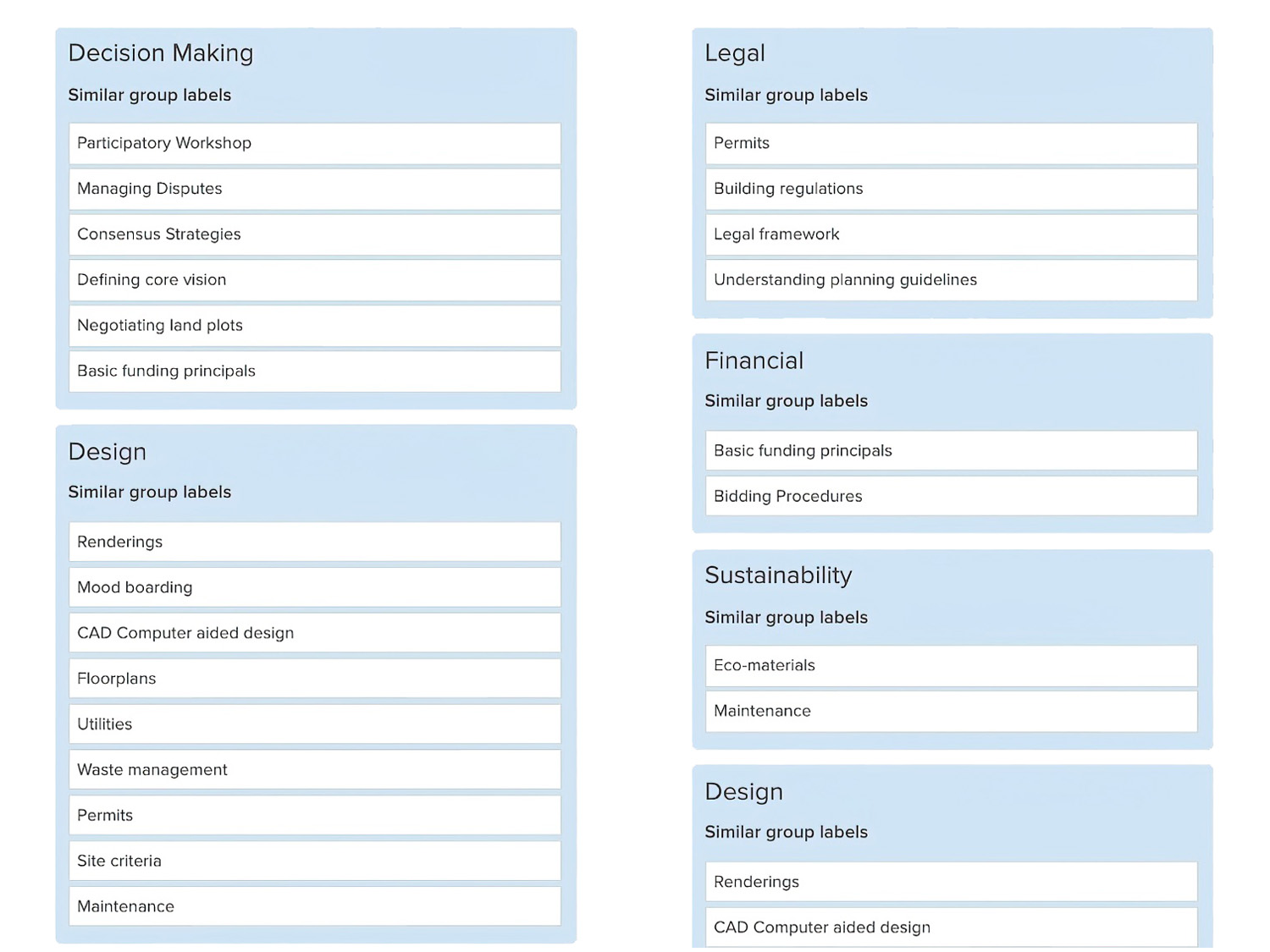
Our final website design has a professional, but friendly feel. The branding and UI choices are meant to reflect gender neutrality, sustainable living and community.
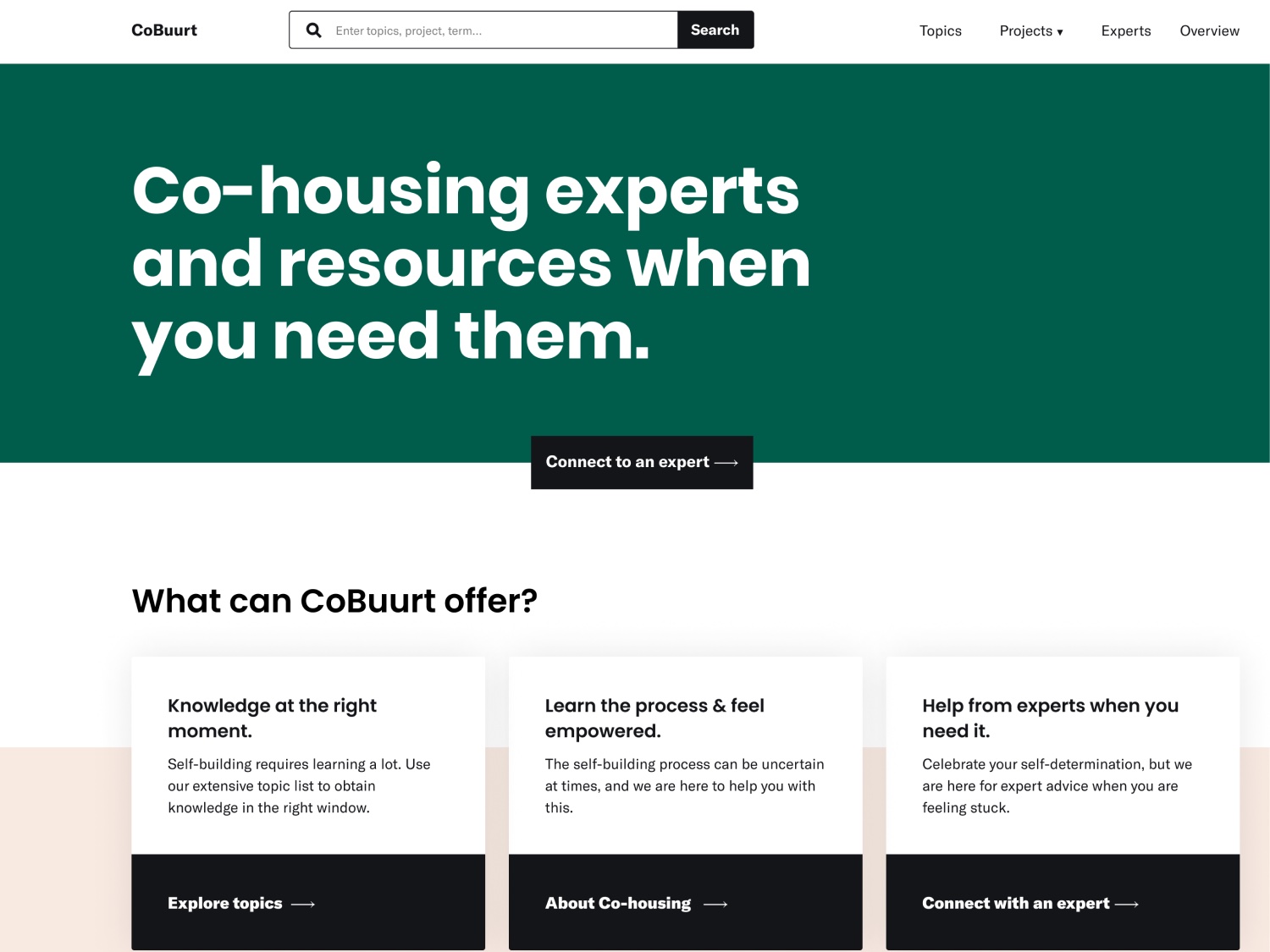
We learned from user research that co-housing residents were inspired and sometimes mentored by other co-housing communities. It is typical for a building group to visit three or more communities for inspiration or for planning guidance. Our platform lists case studies which detail successful co-housing community projects and the strategies they used.
Cobuurt users can learn about planning specifics such as construction materials costs, design strategies and permit writing best practices by jumping directly to the topics and resources page.
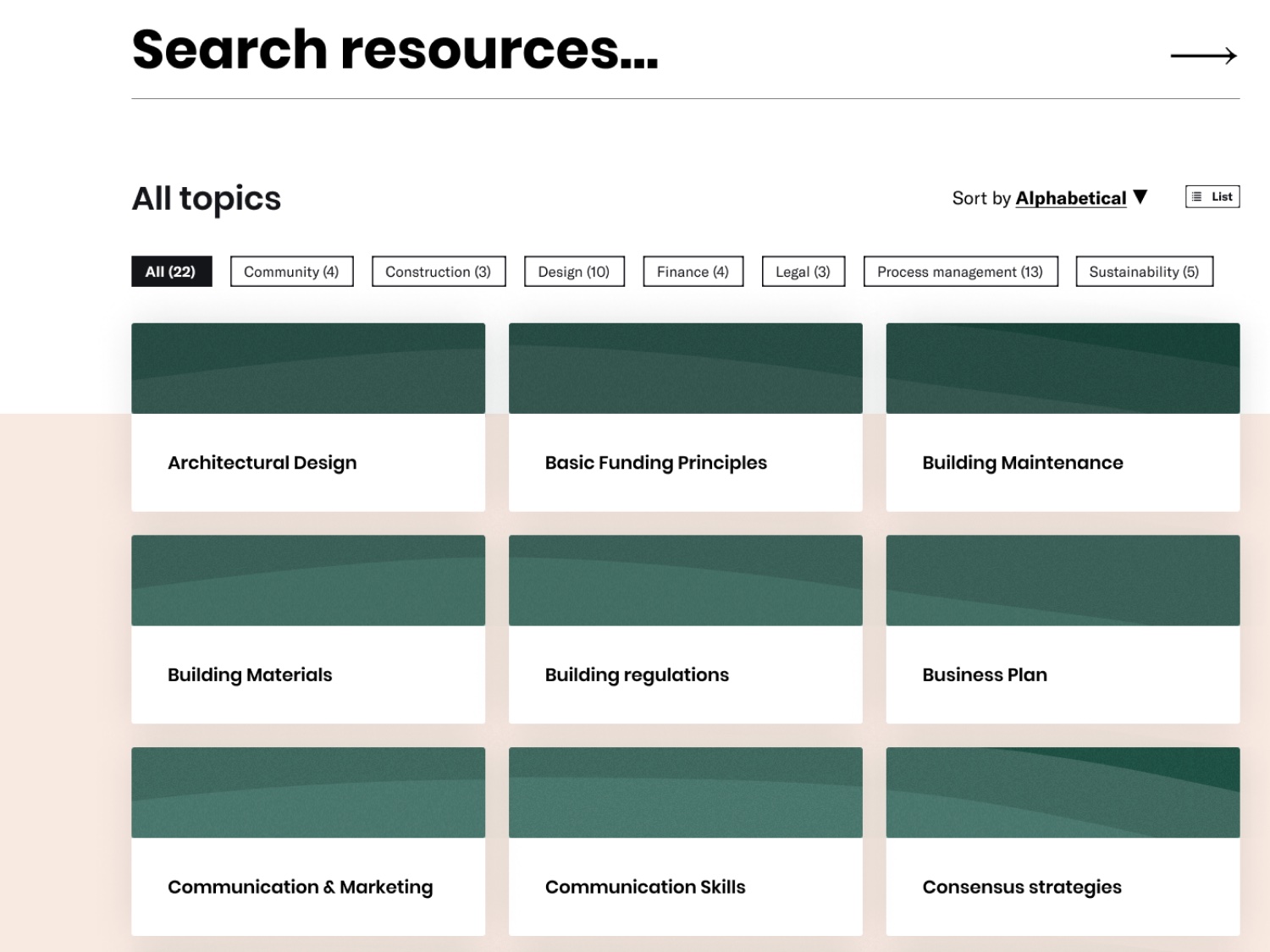
Our partners page lists the expert stakeholders involved in moderating and facilitating the Cobuurt service. Future Cobuurt partners might include building material suppliers or other co-housing organizations and contractors.
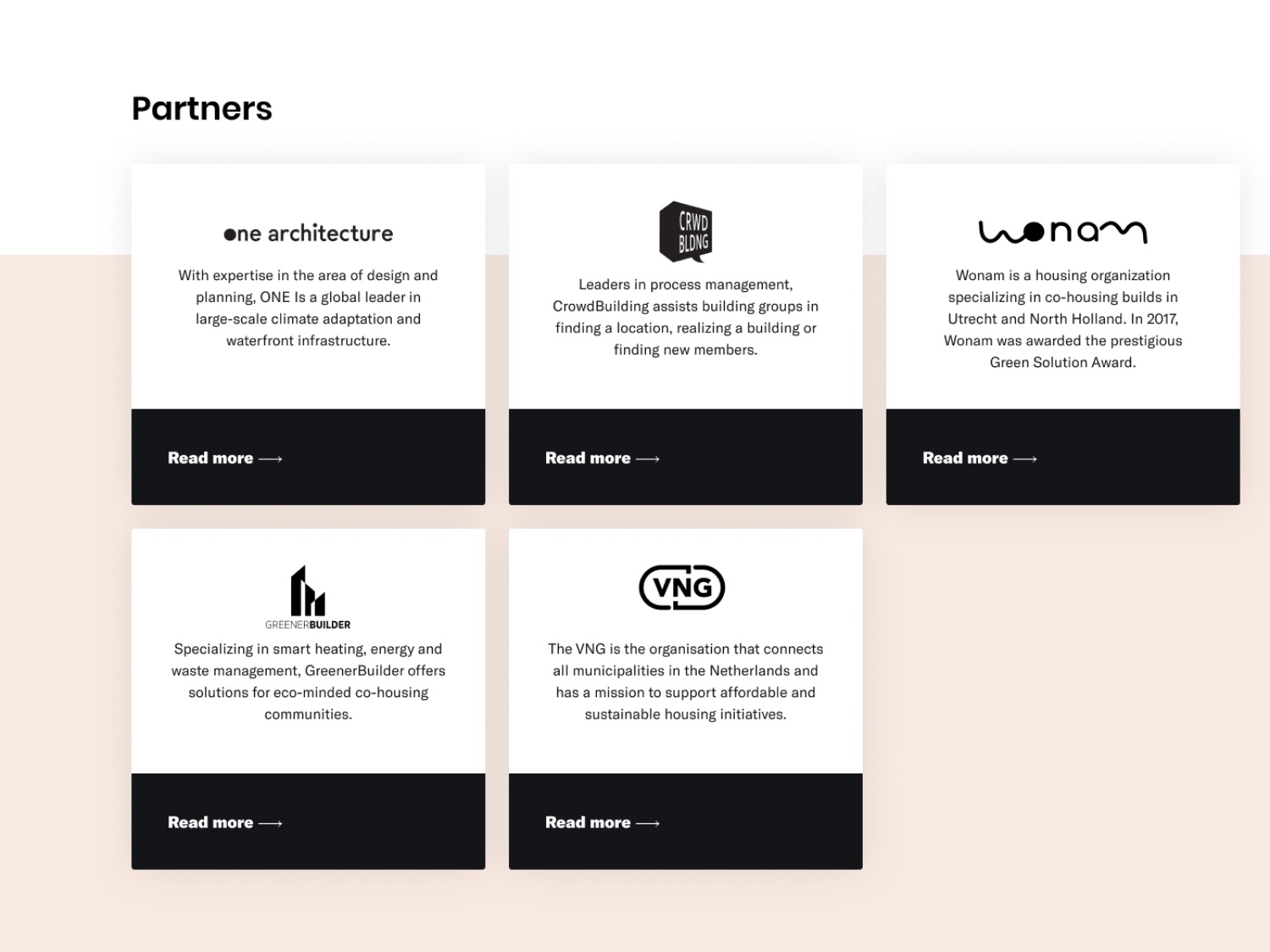
Co-housing presents an interesting solution for combatting the housing crisis and eco-friendly, urban development. The individuals who live in these communities have very interesting stories to tell and so we made sure to include these within our design.
I found the most interesting part of this project to be the service design component. We used various design methods such as the value proposition canvas and ecosystem mapping to help pitch the idea to our clients.
